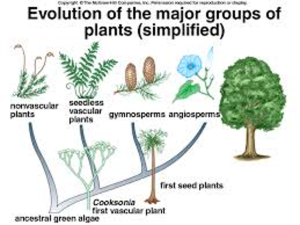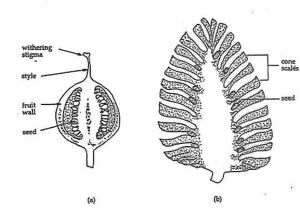66 Seed-bearing Plants
The remaining vascular plants are seed-bearing.
Seeds contain a baby plant (embryo) and food supply surrounded by a protective coat.
Seeds still need some protection from climatic (temperature, light intensity, etc.) and environmental effects (fire, flood, etc.).
There are two key groups or sub-divisions:
- The seed bearing non-flowering plants or Gymnospermophyta; (once known as Gymnosperms).
- The seed bearing flowering plants, Magnoliophyta ; (once known as Angiosperms).

Same, same but different…
The figure below shows the basic differences between Gymnospermophyta and Magnoliophyta. The fruits of flowering plants provide much greater protection for the seeds and are often a means of dispersal.
Structure comparison between (a) Magnoliophyta fruit and (b) Gymnospermophyta fruit.

